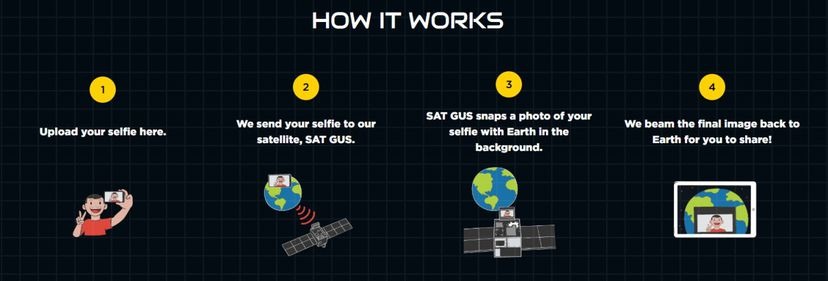Mark Rober, a former NASA engineer turned popular YouTuber, has unveiled an ambitious project that takes the concept of selfies to a cosmic level. Partnering with Google and T-Mobile, Rober plans to launch a satellite capable of snapping selfies with planet Earth in the background. This innovative endeavor is set to combine cutting-edge technology with Rober’s flair for creative stunts.
The Satellite Selfie Experience
Rober, known for his viral YouTube videos like glitter-bombing porch pirates and designing intricate squirrel obstacle courses, is now venturing into space with a groundbreaking project. The satellite, equipped with cameras and Google Pixel phones, will take photos of participants’ portraits displayed on a Pixel screen with Earth as the backdrop.
Here’s how it works: participants submit their selfies, and Rober’s team captures the shot when the satellite orbits above their city. The process allows users to be part of the picture twice—first through their submitted portrait and second by physically standing outdoors during the satellite’s pass. The satellite is scheduled for launch aboard SpaceX’s Transporter 12 mission in January 2025, with selfie-taking operations beginning a few months afterward.
The Catch: Free, But With Conditions
While the opportunity is advertised as “free,” there are some conditions to access the service. Participants need a special code, obtainable in three ways: subscribing to Rober’s CrunchLabs, which provides engineering kits for children (subscriptions cost between $25 and $80 annually), using the T-Life app for T-Mobile subscribers, or taking advantage of a promotion available to Google Pixel customers.
Once participants secure a code, they can redeem it starting December 3 at spaceselfie.com. After uploading their selfie, they’ll receive an email with details on when the satellite will take their picture and instructions on how to track the process.
Engineering a Satellite for Selfies

Rober has released a YouTube video explaining the intricate mechanics behind this space-based selfie machine. The satellite is outfitted with two cameras and two Google Pixel phones for redundancy, ensuring reliable performance. It relies on a solar array for energy, which powers a 120Wh battery pack.
However, the satellite faces a unique challenge: it must align itself in multiple orientations to collect solar energy, take selfies, and transmit pictures. Without the use of propellors or thrusters for positional adjustments, Rober’s team developed an innovative solution. They installed a flywheel inside the satellite, enabling it to shift positions based on the task at hand. This clever engineering approach ensures the satellite can efficiently switch between functions.
A Gimmick with Global Appeal
Though the project is undeniably a marketing stunt, it showcases the blending of entertainment, education, and technology. Rober’s collaboration with T-Mobile and Google taps into his YouTube audience’s love for creative experiments while also promoting their brands. The inclusion of CrunchLabs underscores Rober’s commitment to inspiring future engineers by making STEM (science, technology, engineering, and mathematics) engaging for younger audiences.
By allowing participants to claim a small moment in space history, the project promises to resonate with both casual fans and tech enthusiasts. The interactive aspect—knowing exactly when and where your selfie is being taken—adds a personal touch, making the experience memorable.
Broader Implications
Rober’s satellite selfie project is more than just a flashy gimmick. It demonstrates how private enterprises can merge entertainment with advanced technology to capture public imagination. This initiative follows a broader trend of making space exploration accessible and relatable, reflecting the growing role of private companies in space innovation.
Moreover, the project underscores the power of creative problem-solving. From the redundancy built into the satellite’s camera systems to the use of a flywheel for orientation adjustments, the endeavor exemplifies how complex challenges can be addressed with smart, resourceful engineering.
Conclusion
Mark Rober’s latest venture is a bold and playful fusion of technology, creativity, and public engagement. By combining his engineering expertise with his knack for viral content, Rober has found a way to turn selfies into a space-age experience. While the project may have commercial undertones, it sparks curiosity and excitement about technology and space. Whether you’re a fan of Rober’s YouTube antics, an aspiring engineer, or simply someone who loves a good selfie, this initiative offers a unique chance to leave your mark—quite literally—in orbit.
